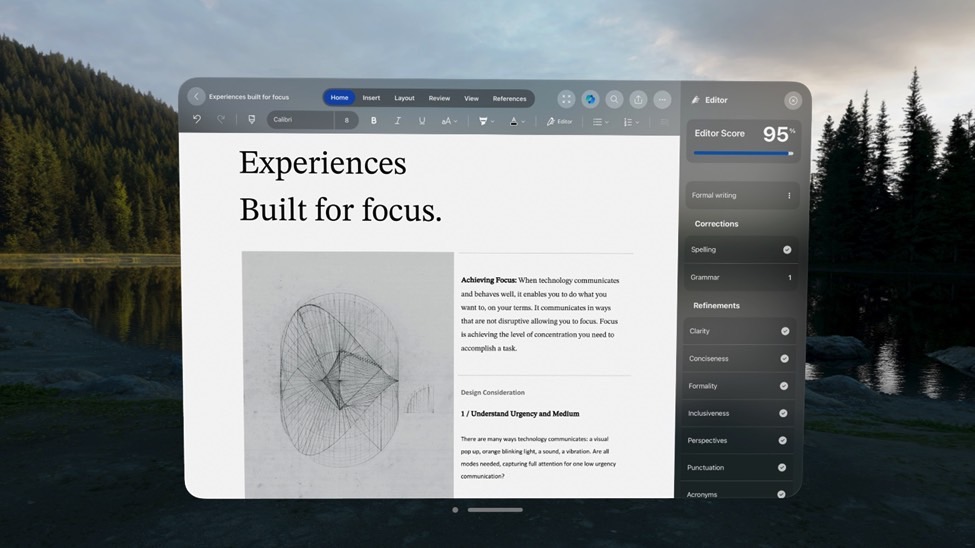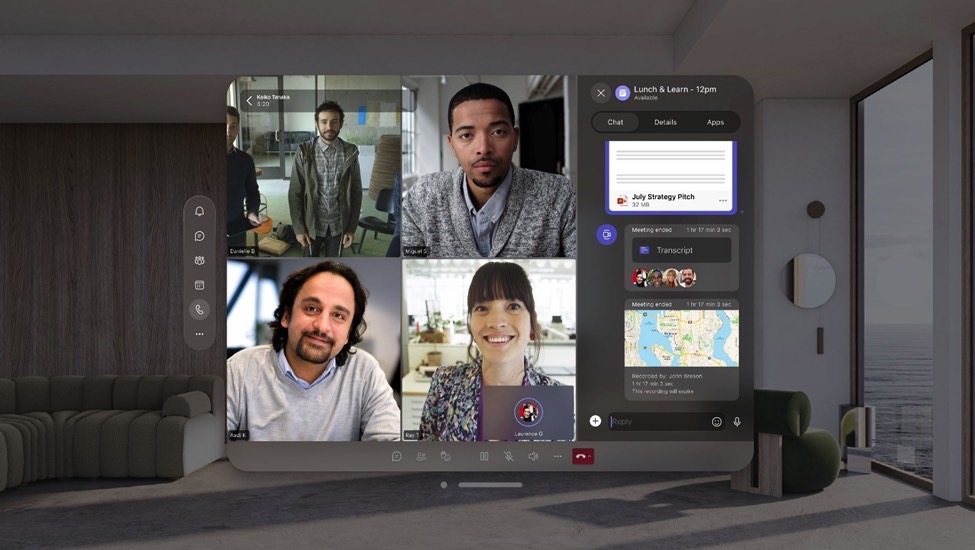One of the glaring Vision Pro issues that I noted immediately after Apple unveiled the headset last summer was the absence of generative AI features. But it was still too early for Apple to unveil a ChatGPT rival of its own. OpenAI’s generative AI software was just six months old at the time. There was plenty of time for Apple to bring its ChatGPT competitors to products like the iPhone, iPad, and Vision Pro.
Rumors say Apple’s built-in generative AI will happen this year, with Apple’s iOS 18 expected to bring the so-called Apple GPT and a new Siri to iOS. I’d also expect AI features to be built into iPadOS and visionOS, which are operating systems based on iOS.
Vision Pro buyers who want generative AI features on their headsets right away will not have to wait for iOS 18. You can use ChatGPT, Google Bard, Microsoft Copilot, and other AI software on the Vision Pro via the Safari browser. Also, any AI apps for iPhone and iPad might work on the spatial computer.
But Microsoft went out and designed visionOS apps for its Microsoft 365 productivity suite for the Vision Pro. And that includes support for Microsoft Copilot.
Microsoft Copilot is partly built atop ChatGPT. It will offer you access to the GPT-4 language model without paying the ChatGPT Plus subscription. You will only need a Microsoft account and the Vision Pro app that Microsoft created.

Microsoft announced the Vision Pro software in a blog post on Wednesday, right in time for Apple’s Vision Pro launch on Friday. That’s where it explains what Copilot can do on the Vision Pro:
If you are an individual or an organization that uses Copilot, we have some exciting news for you. You will be able to create, analyze and connect, using your own words and voice (literally), with Copilot while using Apple Vision Pro. Copilot can help you to:
- Get more out of your meetings, by being more engaged in the meetings you attend and quickly catch up for the ones you don’t.
- Transform your writing: Copilot drafts, edits, summarizes, and creates right alongside you.
- Bring your ideas to life: Easily start a new presentation from a simple prompt or outline using natural language commands.
- Analyze and explore data: Identify trends, create powerful visualizations, or ask for recommendations to drive different outcomes.
What’s really interesting here is that Microsoft went and created brand new apps for visionOS rather than making its iOS and iPadOS apps available on the spatial computer. That’s one of the advantages of Vision Pro over competitors and other first-gen Apple products. The Vision Pro gets access to millions of iPad apps right out of the box. That’s on top of apps created specifically for visionOS.
The same blog post details the Microsoft 365 apps the company created for the Vision Pro. The list includes PowerPoint, Excel, Word, and Teams. The latter uses the Vision Pro persona feature that lets you create a virtual avatar of yourself.

Some of these apps will take advantage of the virtually infinite AR display you get with the Vision Pro. PowerPoint will feature an Immersive Environment that lets you practice presentations in front of an audience.
Excel will let you use an infinite canvas on the headset and move graphs and charts with ease between apps. Finally, Word will use the Immersive Environments feature to help you focus on the writing task at hand.
Microsoft’s Vision Pro apps will be available before the spatial computer’s launch. I might not get my hands on the spatial computer until much later this year, but I am excited to try some of Microsoft’s apps. Copilot is certainly a priority, at least until a native AI experience running on Apple’s own language models will be available on the headset.
I’ll also note that Microsoft’s approach is a significant departure from the treatment Vision Pro is getting from other developers. Google decided not to make a YouTube app for the Vision Pro, and neither did Netflix. Similarly, there’s no Spotify app for the Vision Pro. And Meta is yet to announce software for the Vision Pro.
The Vision Pro launch dropped right in the middle of a heated debate between Apple and developers that’s part of a much larger battle over iPhone apps. Just last week, Apple announced rules for iPhone sideloading in the EU.
Unsurprisingly, some developers were quite vocal about the DMA changes, including Microsoft’s Xbox president. Spotify and Epic are other examples. But that doesn’t mean Microsoft will not go forward with its visionOS apps.








